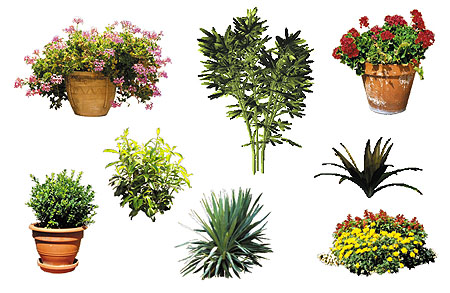3d Plants Photoshop

Choose Format. REAL TREES is a tree model library with 60 realistic 3d models of trees. Each of the 15 tree species has 4 different variations, prepared as 3Ds Max scene file. The included REAL TREES in PLANTS Complete is the 3ds Max version with renderer support for vray, Corona Renderer, Octane Render, Scanline and mental ray. For 3d Use: The plants are from all over the world: Europe, Americas, Asia, Japan, China, Africa, Oceania - giving you the ability to build localized ecosystems content for nearly any region of the world. Dazzle any client, anywhere in the world, for years to come! Save literally thousands of hours of compositing and 3d rendering time - Buy.
So, do you want to create shadows in Photoshop for your next architectural presentation? Let’s start stating some keypoints: It is different to create shadows for cutout objects (persons, trees, cars) than to create shadows for buildings. Also it is different to create atmospherical shadows (like the blurred shadow of a non-visible tree in the foreground of the rendering) than the previous ones I mentioned. Well maybe they differ just a bit in the process, but the effect to achieve is different.
Btw: As you might constantly looking to find more high quality cutout graphics and textures for architecture visualization you should check out our category – you will find several professional graphics here that you can use for free – even for commercial projects! Also notice there is a huge gap into just creating shadows than creating realistic shadows. Anyone can add shadows, but making them look as if they were rendered is a whole new world. In this article I want explain my workflow when it comes to this typical photoshop task for architects. Why create shadows in Photoshop and not in 3D? Let’s imagine you are not good at rendering, or that you don’t have a powerful PC. Also your lighting techniques may not be that good, but you get your way wonderfully with Photoshop.
There you get a reason to know how to create shadows in Photoshop. But mostly the reason is because when working in ArchViz, 90% of the time you add elements to your rendered scenes in Photoshop.
Trees, people (almost 95% of the time; the 5% could be if you actually like 3D people, which isn’t my case really), some scenery elements like publicity ads or flags that you didn’t find a proper 3d model for render. Then if you don’t know how to cast shadows properly in Photoshop, all that amazing job you been doing goes to garbage. Download free software my candy love ap hack. The sooner the accept it, the better you will be at the ArchViz world: you can spend 6+ hours of rendering, but without 2+ hours of well-done post processing in Photoshop, your images won’t be contest-quality. Adding shadows to cutout people I am going to start with this conceptual scene I made for a university project of mine.
No post processing in which regards to adding cutouts, just a few post production adjustments with Levels and Curves (notice that there is no background since it is a PNG image) And suddenly I decided that for better result in this concept I may need to add some people at the scene for reinforcing the scale idea of my building. So then starting from a cutout png people file, I select it and drag to my scene.